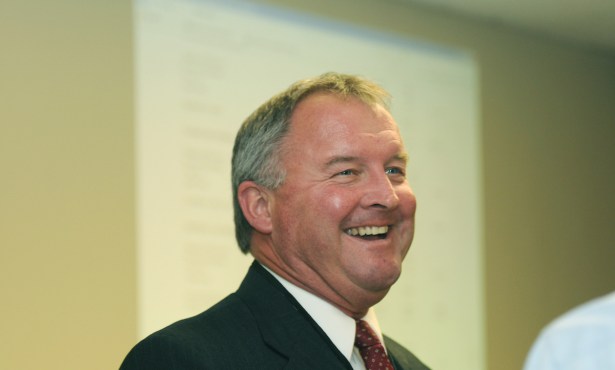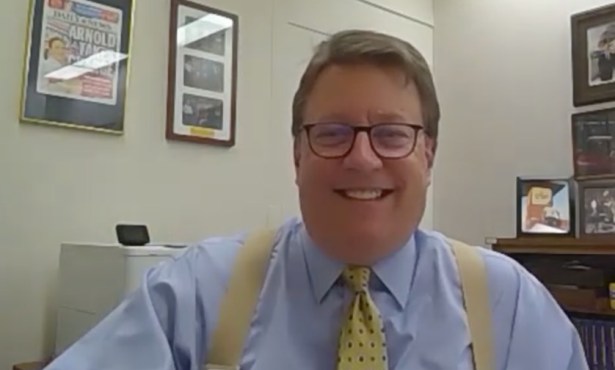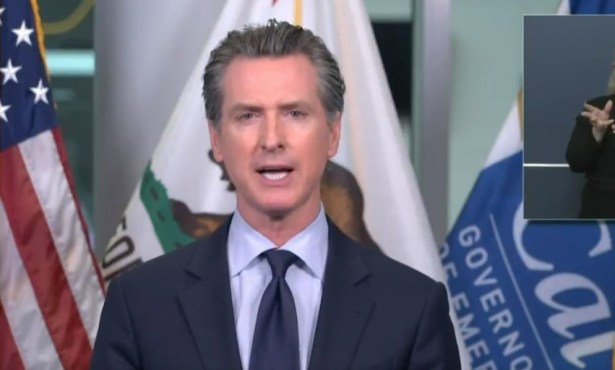T-Ridge Returns
State Budget Analyst's Worst-Case Scenario Resurrects S.B. Offshore Oil Project
A new state budget report has suddenly revived a proposal to expand oil drilling off the coast of Santa Barbara — less than a year after the hugely contentious project was withdrawn in Sacramento.
In what capitol insiders have tagged the “doomsday scenario,” the Legislature’s nonpartisan budget analyst lists approval of the Tranquillon Ridge offshore drilling plan as a possible source of new revenue to help ease California’s $26-billion shortfall.
The T-Ridge project bitterly divided Santa Barbara’s environmental community for several years. However, one measure of the extraordinary depth of the state’s fiscal problems is that the return of the offshore proposal barely registered in statewide media coverage of the new budget report by Mac Taylor, the influential legislative analyst; his study outlines $13.5 billion in further cuts for public schools, the University of California, health care, prisons, state salaries, welfare, wildfire fighting, and virtually every other state program — all beyond the $12 billion in reductions already put forth by Governor Jerry Brown.

“We have had to go far beyond our normal comfort level in order to meet the requested solutions target,” Taylor said in the report, using language that is unusually strong for the scrupulously neutral and routinely bland-spoken analyst. “Some of the listed actions would have serious impact on individuals, programs, and local governments.”
As a policy matter, his list of more than 100 potential budget moves was prepared to detail the scope and scale of fiscal actions that will be needed if Brown’s call for $14 billion in temporary tax increases is not extended by voters. The governor last month offered a half-cut, half-tax strategy for slashing the deficit; Republicans so far have blocked his effort for a June special election in which voters would decide whether to continue higher sales, income, and vehicle tax rates, approved for two years in 2009, for five more years.
If Brown’s measure does not make the ballot, or if voters turn it down once it does, Taylor said the kinds of cuts lawmakers would have to confront would include, among many others, the following:
• $5.2 billion for K-12 schools and community colleges, an amount likely to require a shortened school year, an end to small-class-size programs, a new rule that kindergarten students be at least five years old, and another increase in SBCC fees.
• $1.1 billion in additional cuts for the UC and CSU systems — beyond the $1 billion Brown earlier proposed — which could require higher tuition and fees, curtailment of university research, and other steps that “affect the availability and cost of educational opportunities for students.”
• $1.5 billion in “general government” cuts, such as eliminating the Consumer Services Agency, the Commission on the Status of Women, and the Arts Council and halting all bond sales and many public-works projects.
As a political matter, Brown has intentionally avoided making public his own worst-case options, saying he does not want to “hold a gun” to the heads of voters or lawmakers by making what could be perceived as threats. But the new report, prepared at the request of state senate budget committee chair Mark Leno (D-S.F.), is all but certain to sharpen the partisan divide over the tax extensions the governor wants, as Republicans dig in on their refusal to provide the five votes in the Legislature needed to put a measure on the ballot.
For Brown, the Santa Barbara offshore project, one of the few policies in Taylor’s report to increase state revenues, would represent a special quandary. A longtime foe of offshore drilling, the governor would be under pressure to back the plan, estimated to bring $100 million a year into the treasury, because of his call for shared sacrifice across the political spectrum.
The project calls for a new state oil lease — the first since the 1969 Santa Barbara spill — authorizing the PXP oil company to drill into state waters from its existing Platform Irene facilities in federal water, more than three miles offshore.
Some S.B.-area environmentalists, led by the Environmental Defense Center, supported the lease as part of a negotiated package they said would end future drilling in federal waters from Irene and three other platforms. Others, notably former Assemblymember Pedro Nava, said it would set a dangerous precedent that could open Santa Barbara’s coast to more drilling. Ex-governor Arnold Schwarzenegger last year dropped his bid to approve T-Ridge in the wake of the Deepwater Horizon disaster in the Gulf of Mexico.
“Friggin’ cats only have nine lives,” said Nava, who led the opposition to the plan in the Legislature. “This feels like at least a dozen.”



